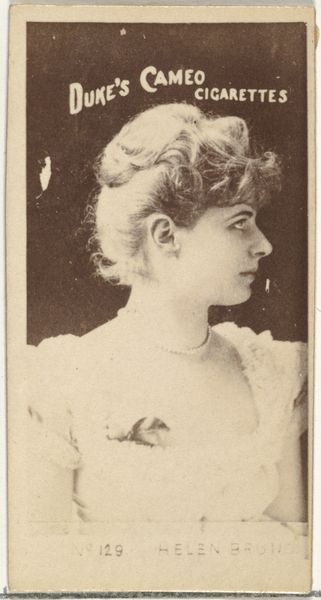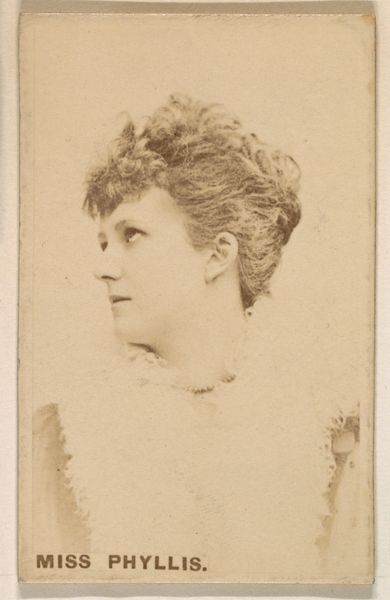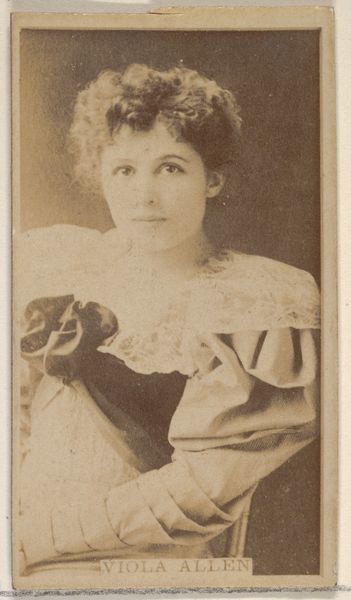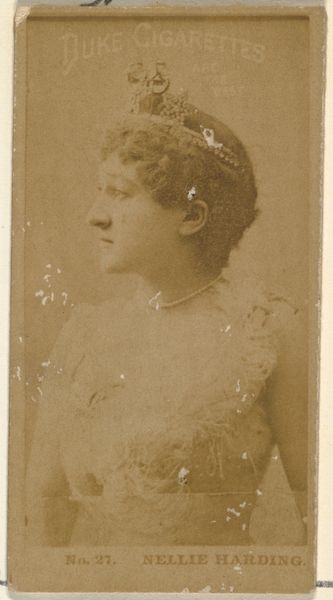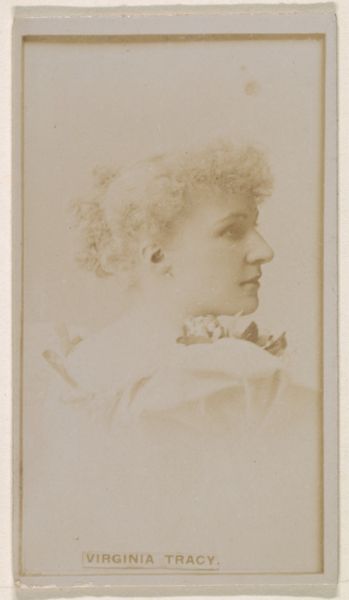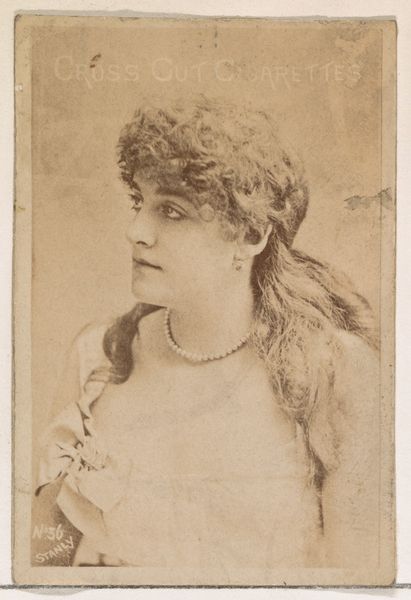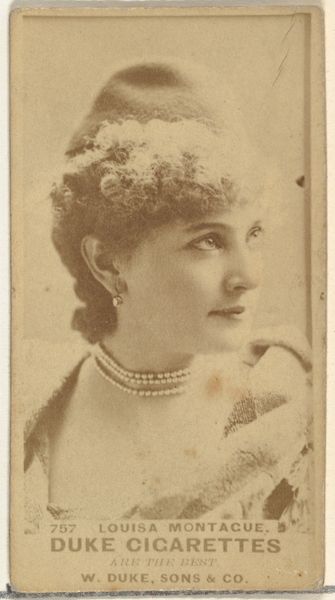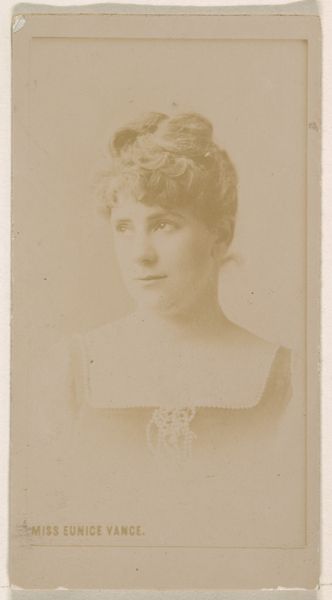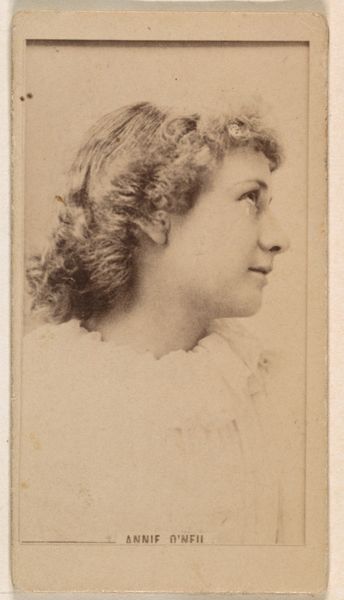
Miss Williamson, from the Actresses series (N245) issued by Kinney Brothers to promote Sweet Caporal Cigarettes 1890
0:00
0:00
drawing, print, photography
#
portrait
#
drawing
# print
#
photography
#
portrait reference
#
portrait drawing
Dimensions: Sheet: 2 1/2 × 1 7/16 in. (6.4 × 3.7 cm)
Copyright: Public Domain
Editor: Here we have "Miss Williamson," a promotional print from the Actresses series by Kinney Brothers, around 1890. It's a lovely, soft portrait, almost ethereal in its simplicity. What do you see in this piece? Curator: It's crucial to recognize these seemingly innocuous images as active participants in constructing and circulating ideas about femininity and celebrity in the late 19th century. Tobacco companies wielded significant power, and these cards, distributed with cigarettes, were tools used to not only sell a product but also to shape cultural norms. What kind of norms do you think this card enforces? Editor: I suppose it romanticizes a very specific, unattainable beauty standard, a white, delicate femininity. Curator: Exactly. Consider also how actresses, even then, navigated complex terrain. On one hand, they achieved a degree of visibility and agency unheard of for many women. On the other hand, they were perpetually objectified, their images commodified and disseminated in ways that stripped them of control over their own narratives. The male gaze is prominent here, wouldn't you agree? Editor: Definitely. It makes me think about how marketing then, as now, exploits identity for profit, packaging women and selling them alongside other goods. Curator: Precisely. The pose, the soft lighting—it's all carefully orchestrated to appeal to a male consumer base, reinforcing particular ideals of feminine allure, but we might want to investigate who made those decisions. Did the actresses collaborate and provide input, or did they passively sit for photoshoots with prescribed direction? What can this teach us about the agency of the female figure depicted, or even her representation in mass media? Editor: That makes you really consider the complexities behind such an ordinary card. It is both a reflection of, and a contributor to, the gendered politics of its time. Curator: Indeed. By critically examining these historical images, we can learn much about the construction of identity, power dynamics, and the long history of visual culture's role in shaping our perceptions.
Comments
No comments
Be the first to comment and join the conversation on the ultimate creative platform.
